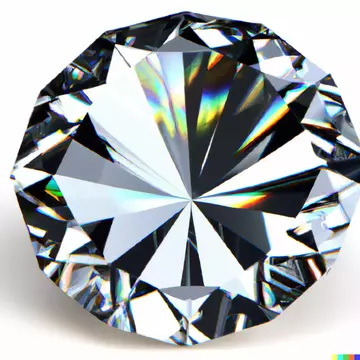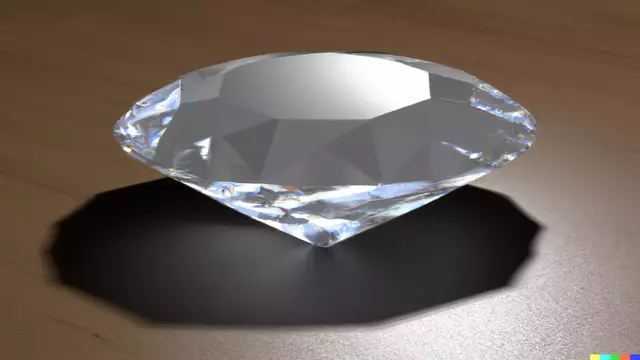When it comes to diamonds, there are a lot of questions. Is diamond an element or a compound? What is diamond clarity? We’re here to help answer all those questions and more! Keep reading to learn all about diamonds.
Diamond is an element. It is made up of carbon, which is an element on the periodic table.
Diamonds are a girl’s best friend, but let’s be real, who can afford to be friends with something that costs more than a small island? Moissanite, on the other hand, is the affordable best friend you can take home to meet your mom without breaking the bank.”
What is a diamond?
A diamond is a pure form of carbon, and therefore an element. It is the hardest naturally occurring mineral on Earth, which makes it valuable for use in jewelry and industrial tools. Diamonds form deep beneath the Earth’s surface, up to 150 km below ground.
Is diamond an element
Is diamond an element? Yes! Diamond is a type of mineral made up of carbon atoms arranged in a crystal lattice. Although it is often thought of as an element, diamond is not an element, but is made up of carbon, which is an element on the periodic table.
This is why sometimes diamonds are referred to as “carbon diamonds”. The atomic structure and properties of diamond are what make it so valuable and special; it is one of the hardest known materials on Earth!
Is diamond a compound
Diamond is a gemstone that is highly valued and prized by many, but is diamond a compound? A compound is defined as a substance composed of two or more elements combined in a fixed ratio. In this case of a diamond, it is a single element made up entirely of carbon atoms.
Thus, it is not considered to be a compound but is instead considered to be an atom. Its unique chemical structure is part of what gives this gem its remarkable hardness and elemental beauty that makes it so popular today.
What is diamond clarity
Diamond clarity is an important component of determining the value of a diamond. It is measured by the number of inclusions or blemishes found in a diamond, as well as their size and position.
Clarity grades range from VVS1 (Very Very Slightly Included 1) meaning that only professionals may find any inclusions, to I3 (Included 3), which means that inclusions are visible to the naked eye.
The number and position of these inclusions determine the clarity grade, which affects the diamond’s value. As a result, it is crucial for someone who wants to buy a diamond to understand what clarity means and what kind of inclusion should be looked out for when selecting one.
How do you know if a diamond is real?
Determining if a diamond is real or not can be tricky. Some signs can tell you if a diamond is real. If you know these signs, you can tell if the diamond is genuine. A key part of assessing a diamond’s authenticity involves observing its physical characteristics, such as size, shape, and color.


Also, ensure that you examine the facets closely to see if they join in a symmetrical pattern and have flat tops and edges. If these details are not present or seem irregular then it could mean that the gemstone in question is not an authentic diamond. Additionally, look to see if there is any discoloration or haziness on the surface of the stone. These factors together should give you an idea of whether or not your diamond is genuine.
How is diamond formed?
Diamonds are one of the Earth’s most beautiful and brilliant wonders, but how did they form? Diamonds are created in extreme conditions up to a hundred miles below the surface of our planet. Under high temperatures and extremely high pressure, these conditions cause carbon atoms to bond together in the form of a diamond structure.
This process can take hundreds of millions of years to complete, with sedimentary rocks carrying many diamonds back toward the surface over time. When compared with metals, diamonds are one of the very few materials that can stand up against these intense environmental pressures – making them as rare and unique as they are beautiful.
Conclusion
Diamonds are one of the most sought-after and valued gems in the world. The element that makes up diamond, carbon, is essential to its strength and beauty. The clarity of a diamond is determined by the number and position of any inclusions or blemishes found in it.
To determine if a stone is real, look closely at its physical characteristics and examine its facets. Finally, diamonds are formed in extreme conditions beneath the Earth’s surface through a process that can take hundreds
